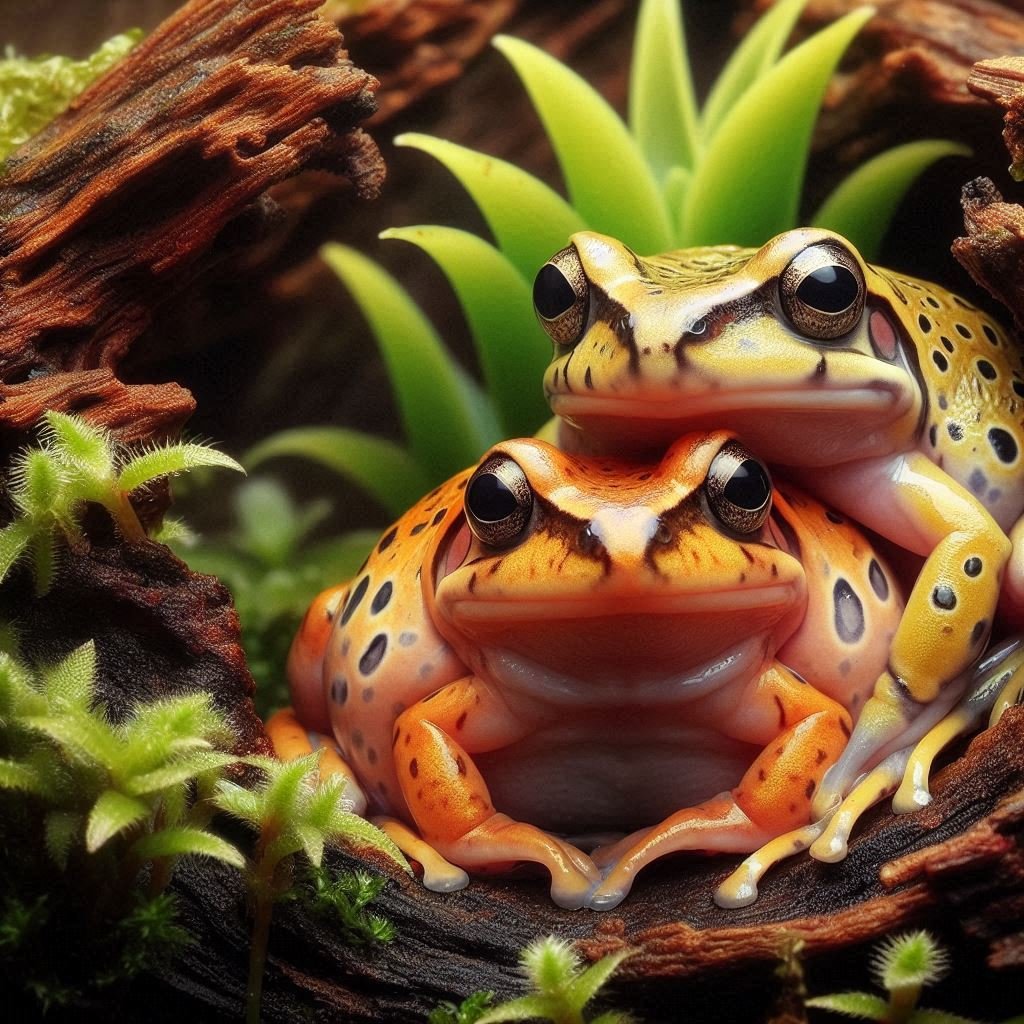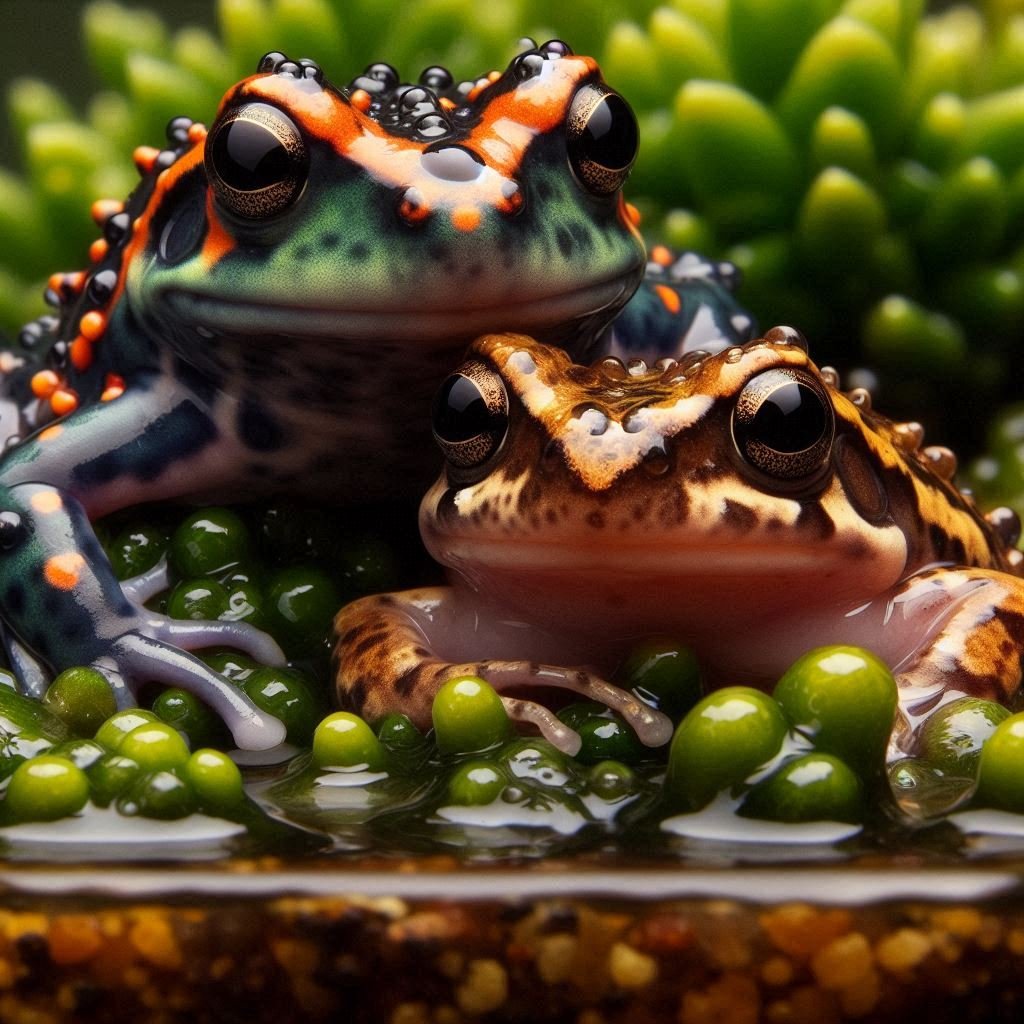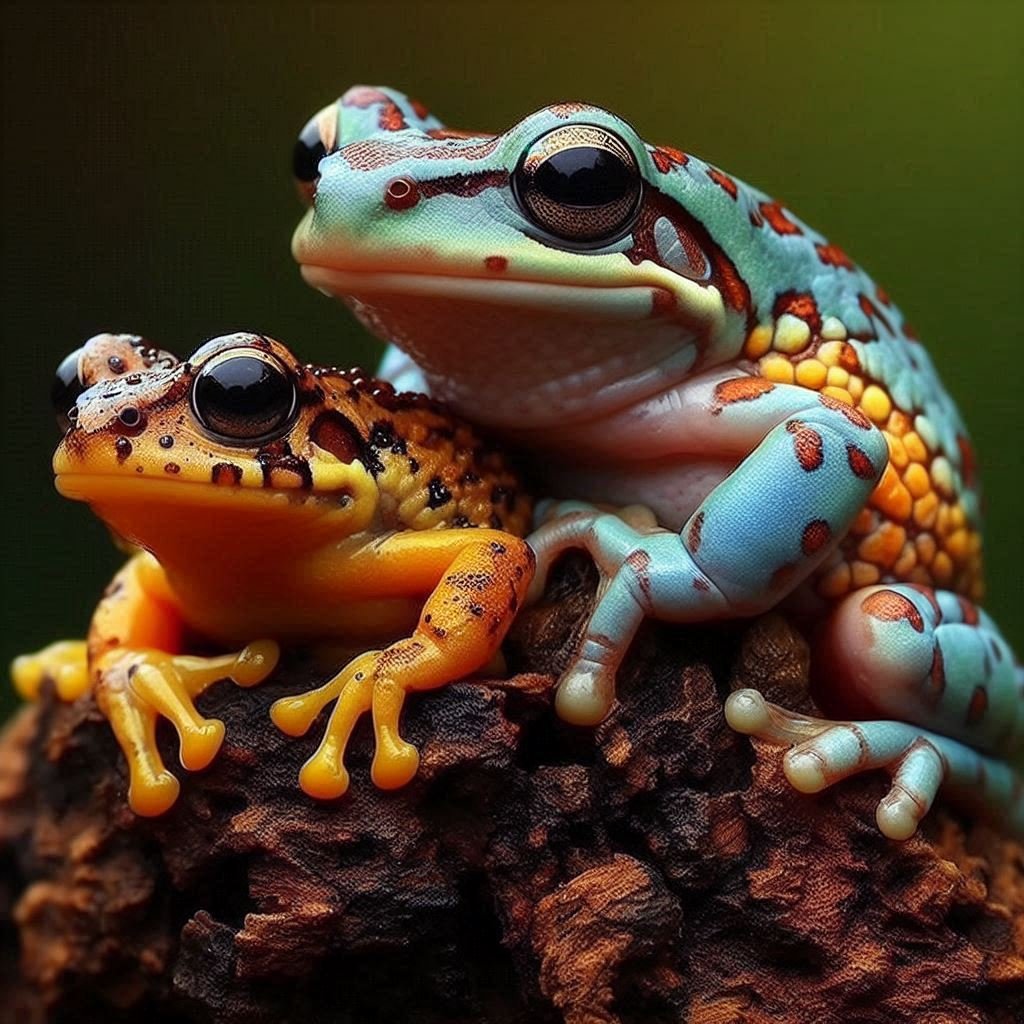African Dwarf Frogs Male vs Female: A Comprehensive Guide
African Dwarf Frogs Male vs Female: When it comes to the fascinating world of amphibians, few creatures capture the imagination like the African Dwarf Frog.
In fact, when it comes to breeding and caring for your African Dwarf Frogs, understanding the differences between males and females is crucial for a successful and healthy environment.
In this post, we’ll delve into the key characteristics that set male and female African Dwarf Frogs apart, and provide valuable insights on how to identify and care for each sex.
African Dwarf Frogs Male vs Female: A Quick Guide

Physical Characteristics:
- Males:
- Smaller in size
- More slender body shape
- Narrower waist
- More vibrant coloration
- More pronounced pattern of spots or stripes
- Females:
- Larger in size
- More rounded body shape
- Wider waist
- Less vibrant coloration
- Less pronounced pattern of spots or stripes
Behavioral Differences:
- Males:
- More aggressive and competitive
- Perform complex courtship displays
- Vocalize more frequently
- More likely to engage in territorial displays
- Females:
- Less aggressive and less competitive
- Respond to male courtship displays
- Less likely to engage in territorial displays
Ventral Area:
- Males:
- More prominent ventral area
- More pronounced papilla
- Females:
- Less prominent ventral area
- Less pronounced or absent papilla
Breeding and Mating:
- Males:
- Initiate courtship and mating
- Perform complex courtship displays
- Mate with multiple females
- Females:
- Respond to male courtship displays
- Mate with a single male
- Exhibit “mate-guarding” behavior
Physical Characteristics: What Sets Males and Females Apart

Body Shape and Size
- Males: Typically smaller than females, with a more slender body shape and a narrower waist.
- Females: Larger than males, with a more rounded body shape and a wider waist.
Coloration and Pattern
- Males: Often have a more vibrant coloration, with brighter shades of brown, gray, and yellow. They may also have a more pronounced pattern of spots or stripes.
- Females: Tend to have a more subdued coloration, with duller shades of brown, gray, and yellow. Their pattern of spots or stripes may be less pronounced.
Snout Shape and Size
- Males: Have a narrower, more pointed snout than females.
- Females: Have a wider, more rounded snout than males.
Limbs and Toes
- Males: Have shorter limbs and toes than females.
- Females: Have longer limbs and toes than males.
Other Physical Characteristics
- Males: May have a more prominent vocal sac, which is used for croaking.
- Females: May have a more prominent cloaca, which is the multi-purpose opening used for reproduction, digestion, and excretion.
Vocalizations: Do Males and Females Croak Differently?
Male Vocalizations
- Males are the primary vocalizers in African Dwarf Frog populations.
- They produce a high-pitched, rapid series of clicks or chirps, often described as a “quack” or “bark”.
- Male vocalizations are typically louder and more frequent than those of females.
- Males will often vocalize to establish territory, attract females, and warn off rival males.
Female Vocalizations
- Females are less vocal than males and tend to produce softer, more subdued sounds.
- Female vocalizations are often described as a low-pitched “hmm” or “grumble”.
- Females may vocalize in response to a male’s call or to signal receptivity to mating.
- Female vocalizations are generally less frequent and less loud than those of males.
Key Differences
- Frequency: Males vocalize more frequently than females.
- Loudness: Male vocalizations are generally louder than those of females.
- Pitch: Male vocalizations tend to be higher-pitched than those of females.
- Context: Males vocalize to establish territory and attract females, while females vocalize primarily in response to males or to signal receptivity to mating.
Behavioral Differences: How Males and Females Interact

Male Behavior
- Males are generally more aggressive and competitive with each other, especially during the breeding season.
- They will often engage in territorial displays, such as posturing, vocalizing, and even fighting to establish dominance.
- Males will also perform complex courtship displays to attract females, including vocalizations, foot-tapping, and even “dance-like” movements.
Female Behavior
- Females tend to be more docile and less aggressive than males, especially during the breeding season.
- They are often more selective in their mate choice, preferring males with more impressive courtship displays or dominant behaviors.
- Females may also exhibit “mate-guarding” behavior, where they remain close to a chosen male to prevent other males from mating with them.
Interactions Between Males and Females
- During the breeding season, males will often approach females and initiate courtship displays to persuade them to mate.
- Females may respond to male courtship displays by vocalizing, posturing, or even attempting to escape.
- If a female is receptive to mating, she will often signal her acceptance by remaining still, lowering her body, or even climbing onto the male’s back.
Size Matters: How to Tell Males and Females Apart by Size
Male Size
- Males typically reach a maximum size of around 1-1.5 inches (2.5-3.8 cm) in length.
- They usually weigh between 0.07-0.14 oz (2-4 grams).
- Males tend to have a more slender build and a narrower waist than females.
Female Size
- Females typically reach a maximum size of around 1.5-2 inches (3.8-5 cm) in length.
- They usually weigh between 0.14-0.28 oz (4-8 grams).
- Females tend to have a more rounded body shape and a wider waist than males.
How to Measure Your Frog
- To measure your frog, gently place it on a flat surface and use a ruler or caliper to measure its length from the tip of its snout to the vent (the area where the legs meet the body).
- Weigh your frog using a digital scale or a balance.
Important Notes
- Size is not a foolproof method for determining sex, as there can be some overlap between males and females.
- Other factors, such as age, diet, and environment, can also affect a frog’s size.
- It’s essential to consider other characteristics, such as coloration, pattern, and behavior, in addition to size, to make an accurate sex determination.
The Role of Vent Sexing: A Closer Look at the Frog’s Ventral Area
What is Vent Sexing?
- Vent sexing involves examining the frog’s ventral area, which includes the cloaca, vent, and surrounding tissues.
- The cloaca is a multi-purpose opening used for reproduction, digestion, and excretion.
- The vent is the external opening of the cloaca.
Male Ventral Characteristics
- Males have a more prominent, rounded vent area, which is often darker in color than the surrounding skin.
- The vent is usually more protruded and rounded in males, with a smaller, more rounded cloaca.
- Males tend to have a more prominent papilla, a small, fleshy bump located near the vent.
Female Ventral Characteristics
- Females have a more elongated, oval-shaped vent area, which is often lighter in color than the surrounding skin.
- The vent is usually less protruded and more oval-shaped in females, with a larger, more rounded cloaca.
- Females tend to have a less prominent or absent papilla.
How to Perform Vent Sexing
- Gently grasp the frog behind the front legs, supporting its body and allowing the ventral area to be exposed.
- Use a magnifying glass or loupe to examine the ventral area, taking note of the shape, size, and coloration of the vent and cloaca.
- Compare your observations to the characteristics described above to make a sex determination.
Important Notes
- Vent sexing requires practice and patience, as it can be challenging to distinguish between males and females, especially in young or immature frogs.
- It’s essential to handle the frogs gently and humanely, avoiding any stress or discomfort that may affect their health and well-being.
Coloration and Pattern Differences: What to Look For
Male Coloration and Pattern
- Males tend to have a more vibrant, intense coloration, with brighter shades of brown, gray, and yellow.
- They often have a more pronounced pattern of spots or stripes, which can be darker or lighter than the surrounding skin.
- Males may have a distinctive “V” or “W” shape on their back, formed by the pattern of spots or stripes.
Female Coloration and Pattern
- Females tend to have a more subdued, muted coloration, with duller shades of brown, gray, and yellow.
- They often have a less pronounced pattern of spots or stripes, which can be fainter or more scattered than those of males.
- Females may lack the distinctive “V” or “W” shape on their back, or it may be less pronounced.
Breeding and Mating Behaviors: How Males and Females Differ
Male Breeding and Mating Behaviors
- Males are the primary initiators of courtship and mating.
- They will often perform complex courtship displays, including vocalizations, posturing, and even “dance-like” movements.
- Males will also engage in territorial displays, such as posturing and vocalizations, to defend their territory from other males.
- Males will often mate with multiple females during the breeding season.
Female Breeding and Mating Behaviors
- Females are generally less aggressive and more selective in their mating choices.
- They will often respond to male courtship displays by vocalizing, posturing, or even attempting to escape.
- Females may also exhibit “mate-guarding” behavior, where they remain close to a chosen male to prevent other males from mating with them.
- Females will typically mate with a single male during the breeding season.
Common Mistakes to Avoid When Sexing African Dwarf Frogs
Mistake #1: Not Considering Multiple Characteristics
- Sexing African Dwarf Frogs is not a one-size-fits-all process. Consider multiple characteristics, such as size, coloration, pattern, and behavior, to make an accurate determination.
Mistake #2: Relying Too Heavily on Size
- While size can be an indicator of sex, it’s not the only factor to consider. Other characteristics, such as coloration and pattern, can be more important in determining sex.
Mistake #3: Not Examining the Ventral Area
- The ventral area is a crucial region to examine when sexing African Dwarf Frogs. Failing to inspect this area can lead to inaccurate sexing.
Mistake #4: Not Considering Age and Health
- Age and health can affect the appearance and behavior of African Dwarf Frogs. Failing to consider these factors can lead to inaccurate sexing.
Mistake #5: Not Providing a Suitable Environment
- Providing a suitable environment for your African Dwarf Frogs is crucial for their health and well-being. Failing to provide a suitable environment can lead to stress, disease, and inaccurate sexing.
Mistake #6: Not Consulting with an Expert
- If you’re unsure about sexing your African Dwarf Frogs, consult with an expert or a veterinarian who has experience with amphibians.
Mistake #7: Not Keeping a Record
- Keeping a record of your frogs, including their sex, age, and health, can help you track their progress and identify any potential issues.
Mistake #8: Not Being Patient
- Sexing African Dwarf Frogs requires patience and attention to detail. Rushing through the process can lead to inaccurate sexing.
FAQs
Q: How can I tell the sex of my African Dwarf Frog?
A: You can determine the sex of your African Dwarf Frog by examining its physical characteristics, such as size, coloration, pattern, and ventral area. You can also consider behavioral differences, such as mating and breeding behaviors.
Q: What are the main differences between male and female African Dwarf Frogs?
A: Males tend to be smaller than females, with a more slender body shape and a narrower waist. Females are generally larger and have a more rounded body shape and a wider waist. Males also tend to have a more vibrant coloration and a more pronounced pattern of spots or stripes.
Q: How can I determine the sex of my African Dwarf Frog if it’s not clear?
A: If the sex of your African Dwarf Frog is not clear, you can try examining the ventral area, which is the area around the cloaca. Males tend to have a more prominent ventral area, while females tend to have a less prominent or absent ventral area.
Q: Can I breed African Dwarf Frogs?
A: Yes, you can breed African Dwarf Frogs. However, it’s important to provide a suitable environment and follow proper breeding techniques to ensure the health and well-being of your frogs.
Q: How long do African Dwarf Frogs live?
A: African Dwarf Frogs can live for up to 5-7 years in captivity, although the average lifespan is around 2-3 years.
Q: Can I keep African Dwarf Frogs as pets?
A: Yes, African Dwarf Frogs can make great pets for experienced frog keepers. However, it’s important to provide a suitable environment and follow proper care and handling techniques to ensure the health and well-being of your frogs.
Q: Are African Dwarf Frogs endangered?
A: African Dwarf Frogs are not currently endangered, but their populations are declining due to habitat destruction and the pet trade. It’s important to support conservation efforts and responsible pet ownership to help protect these frogs and their habitats.

Hello, I’m Aria Cooper, the heart and soul behind Swimmy Buddies. As a devoted fish aficionado, I share my aquatic adventures and expertise to inspire your own underwater explorations. 🐠🌊




